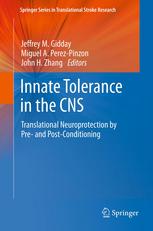

Most ebook files are in PDF format, so you can easily read them using various software such as Foxit Reader or directly on the Google Chrome browser.
Some ebook files are released by publishers in other formats such as .awz, .mobi, .epub, .fb2, etc. You may need to install specific software to read these formats on mobile/PC, such as Calibre.
Please read the tutorial at this link: https://ebookbell.com/faq
We offer FREE conversion to the popular formats you request; however, this may take some time. Therefore, right after payment, please email us, and we will try to provide the service as quickly as possible.
For some exceptional file formats or broken links (if any), please refrain from opening any disputes. Instead, email us first, and we will try to assist within a maximum of 6 hours.
EbookBell Team

4.0
6 reviewsCerebral preconditioning is a phenomenon wherein a mild insult or stress induces cellular and tissue adaptation or tolerance to a later, severe injury, therefore reflecting the efficacy of endogenous mechanisms of cerebrovascular protection. Initially identified for rapid cardiac protection, preconditioning has expanded to all aspects of CNS protection from ischemia, trauma and potentially neurodegeneration. Many different stimuli or stressors have been identified as preconditioning agents, suggesting a downstream convergence of mechanisms and underscoring the potential for translational application of preconditioning in the clinic. Moreover, the fundamental mechanisms responsible for preconditioning-induced tolerance will help in the design novel pharmacological approaches for neuroprotection. While stroke and many other brain injuries are not predictable, in some populations (e.g., metabolic syndrome, patients undergoing carotid endarterectomy, aneurysm clipping, or with recent TIAs) the risk for stroke is identifiable and significant, and preconditioning may represent a useful strategy for neuroprotection. For unpredictable injuries, post-conditioning the brain – or inducing endogenous protective mechanisms after the initial injury – can also abrogate the extent of injury. Finally, remote pre- and post-conditioning methods have been developed in animals, and are now being tested in clinical trials, wherein a brief, noninjurious stress to a noncerebral tissue (i.e., skeletal muscle) can provide protection to the CNS and thereby allows clinicians the opportunity to circumvent concerns regarding the direct preconditioning of neurological tissues.